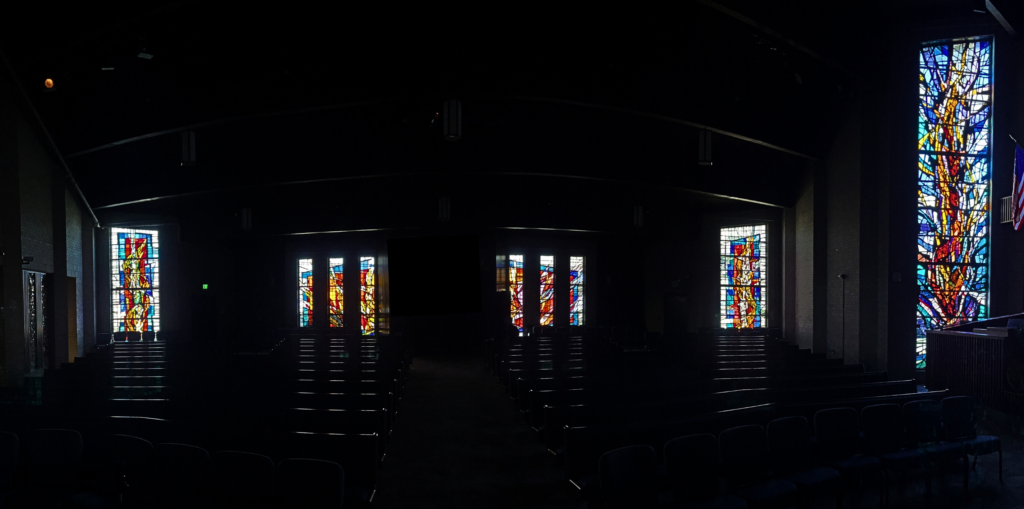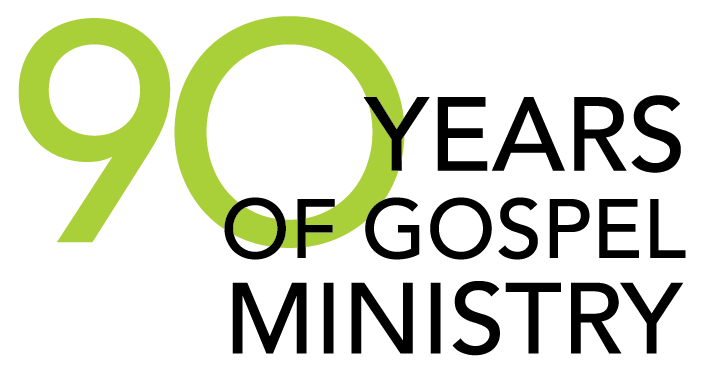
A Clear View Into Forcey’s Stained Glass Windows
| Don Vislay
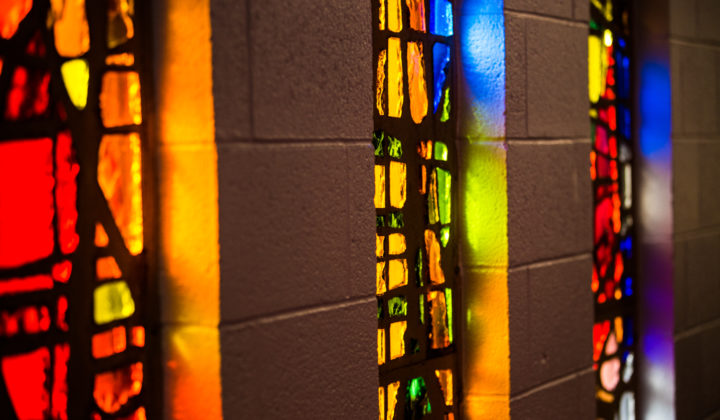
Some of the most beautiful and arresting architectural elements of Forcey Bible Church’s remarkable sanctuary are its distinctive stained glass windows. Contracted through the Willet Stained Glass Studios, Inc., of Philadelphia, and designed by glass artist Charles Z. Lawrence, the 12 windows have graced the sanctuary and choir room since the church was built in 1974. The two-year process of creating the window designs began in 1972 when a Forcey committee reviewed slides provided by Willet Studios showing stained glass installations in churches from across the nation. Windows from 14 churches were highlighted from cities including Seattle, San Francisco, Denver, and Houston. The Forcey committee’s preferences were recorded and summarized by the building architect, Benjamin P. Elliott, in a letter to Willet Studios on November 9, 1972:
“The windows should be generally bright and warm with the introduction of some cool colors to provide a symphony of colors. A full orchestration of flowing melodies, warm and inspiring, punctuated with staccatos and counter points…Vertical motifs, not necessarily straight up and down, varieties of size with smaller pieces woven through and working them into a pattern seemed to be a kind of design that the [Forcey] Committee desires.”
The musical and directional motifs are evident in the final designs, which flow and rise dynamically in a way that can almost be heard as well as seen. From these initial ideas, the artist created the windows we have today. Charles Z. Lawrence (“CZ” to friends and associates), was a noted stained glass artist who worked at Willet Studios. During his over 60-year career, he created 5 windows in the Washington National Cathedral, as well as many others for various facilities including the Smithsonian Institution in Washington, D.C, the University of Rochester, and Penn State University. Lawrence received The Stained Glass Association of America (SGAA)’s Faceted Glass Design Award twice, the Interfaith and Forum on Religious Art and Architecture Award twice, and the St. Francis Xavier Chapel Award of Excellence. In 1994, the SGAA presented Lawrence with its Lifetime Achievement Award. A senior advisor for the American Glass Guild, he was also an associate member of the British Society of Master Glass Painters. He worked from his own studio in Mt. Airy, Maryland, until his death on January 1, 2019.
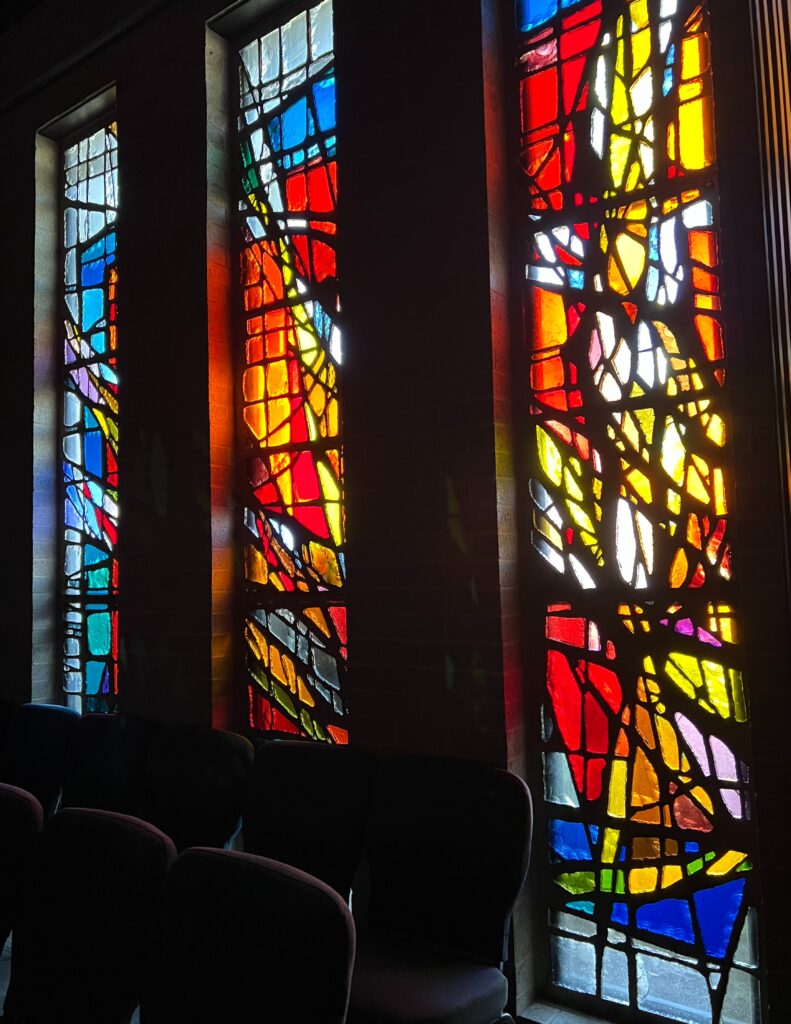
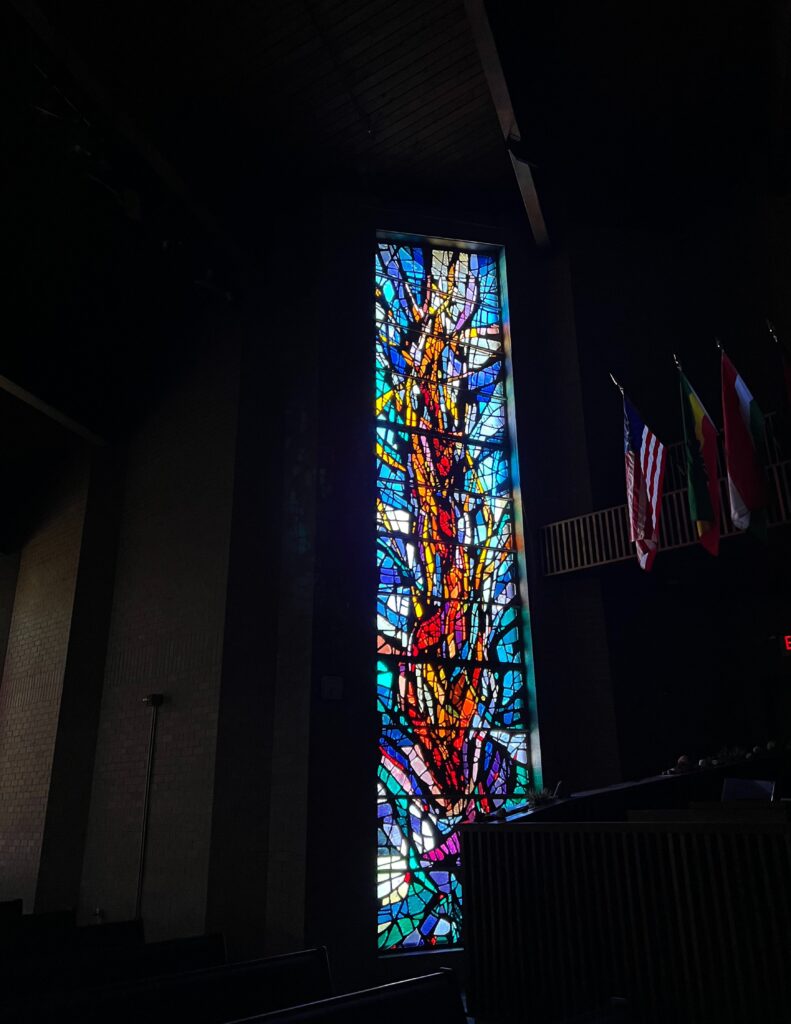
The meaning of the abstract shapes that make up the windows has been a source of speculation for years, as was intended right from the start. Willet Studios summarized the design this way:
“As the people enter the Church perhaps each will have a different interpretation of the window[s]. The orange and red forms seem to suggest flames. It is the flaming sun which keeps the earth alive. The burning bush where Moses saw God is used as a symbol of the presence of God. In the New Testament, tongues of fire indicated the descent of the Holy Spirit at Pentecost to guide the Church. Again, a continuing presence. The golden blaze at the top also suggests the New Jerusalem, the golden city, where the ascended Christ is seated on the throne in glory. The blue background might be the infinite sky. The color blue symbolizes the love of God for all His creatures.”
Several of the windows were originally installed in the rear of the church near the choir rehearsal room, a part of the church that is not frequently seen. To ensure the widest possible audience was able to enjoy these windows, they were moved during the sanctuary’s refurbishment in Summer 2020 and placed in the vestibule just inside the sanctuary, where they can be enjoyed by everyone attending services.
Sources:
https://www.charleszlawrence.com/
https://talkingoutyourglass.com/cz-lawrence/
